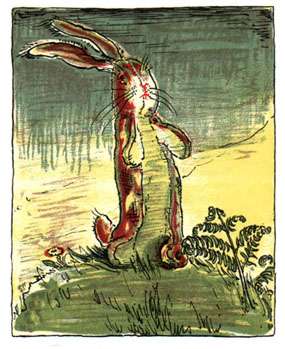The Velveteen Rabbit

The Velveteen Rabbit or How Toys Become Real is a children's novel written by Margery Williams and illustrated by William Nicholson. The story revolves around a stuffed rabbit that wishes to be a real rabbit, and he believes that his dream can be achieved through his owner’s love. The book was first published in 1922 and has been republished many times since.
The Velveteen Rabbit was Williams' first children's book and it was the most popular of all her children's books. It has been awarded the IRA/CBC Children's Choice award.
The Velveteen Rabbit was adapted into a video recording in 1985 by Random House Video; narrated by Meryl Streep, with music by George Winston. It received a Parents' Choice Award for Multimedia and was a Grammy award nominee. In 1976 it was very loosely adapted into the Rankin/Bass Productions Holiday Special, The First Easter Rabbit. In 1984 it was part of the "Enchanted Musical Playhouse" series, where Marie Osmond played the part of the Velveteen Rabbit. In 2003 it was also adapted into a clay-animated film by Xyzoo Animation.
- Bittersweet Ending: The rabbit becomes a Real rabbit in the end, but is separated from the boy, who is left thinking the rabbit was burned with the rest of his toys.
- A Boy and His X
- Companion Cube: The velveteen rabbit is this to the boy before it becomes Real.
- Everythings Better With Bunnies
- The Fair Folk: A fairy (very much the magic-wand-and-sparkles kind) shows up at the end to make the rabbit Real.
- Living Toys: The toys can talk to each other, and to animals, but aren't able to move around by themselves unless they become Real.
- Love Imbues Life
- No Name Given: The boy.
- Pinocchio Syndrome
- Public Domain Character
- Sliding Scale of Living Toys: Level 0 at the beginning, level 6 at the end.
- Swiss Army Tears: Near the end, the rabbit is Real enough to shed a tear, which summons the fairy who makes him fully Real.
- Talking Animal: Animals can talk to each other and to toys, but not to humans.